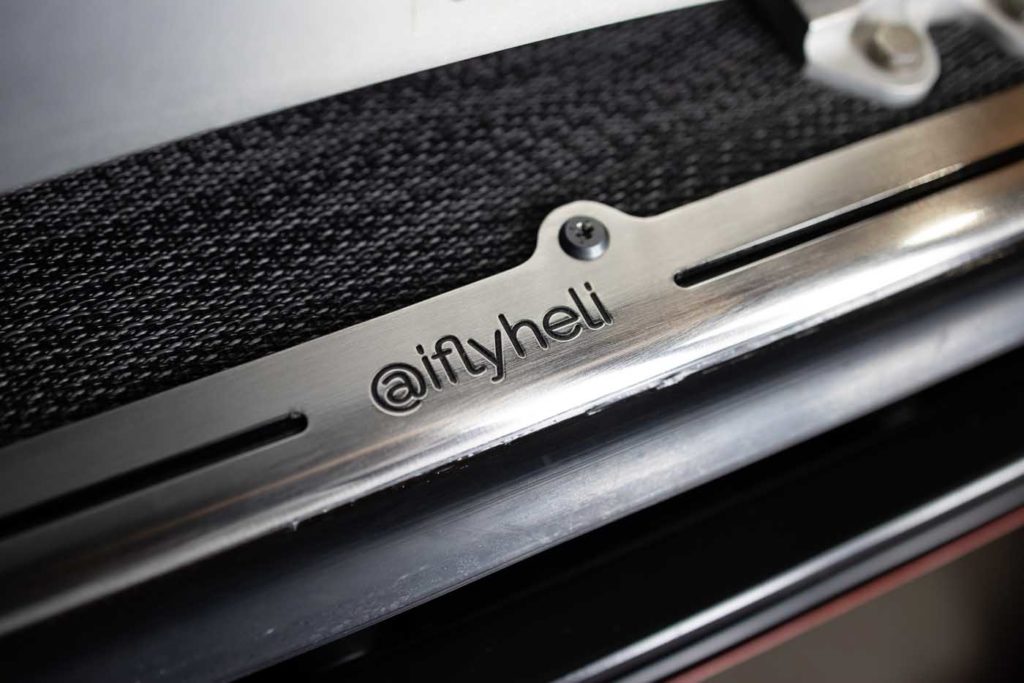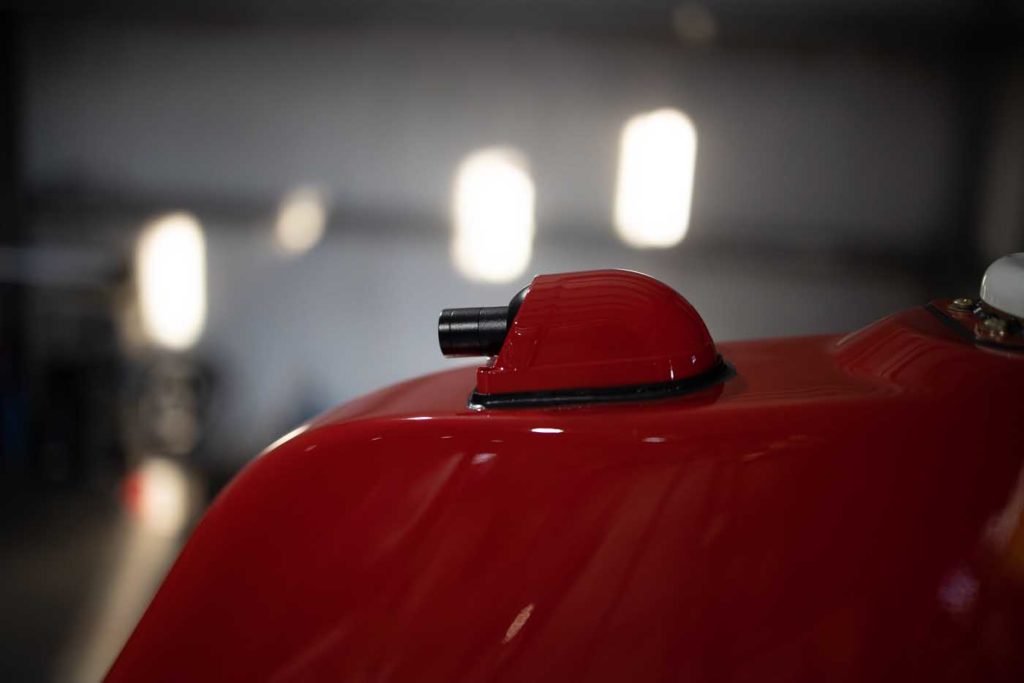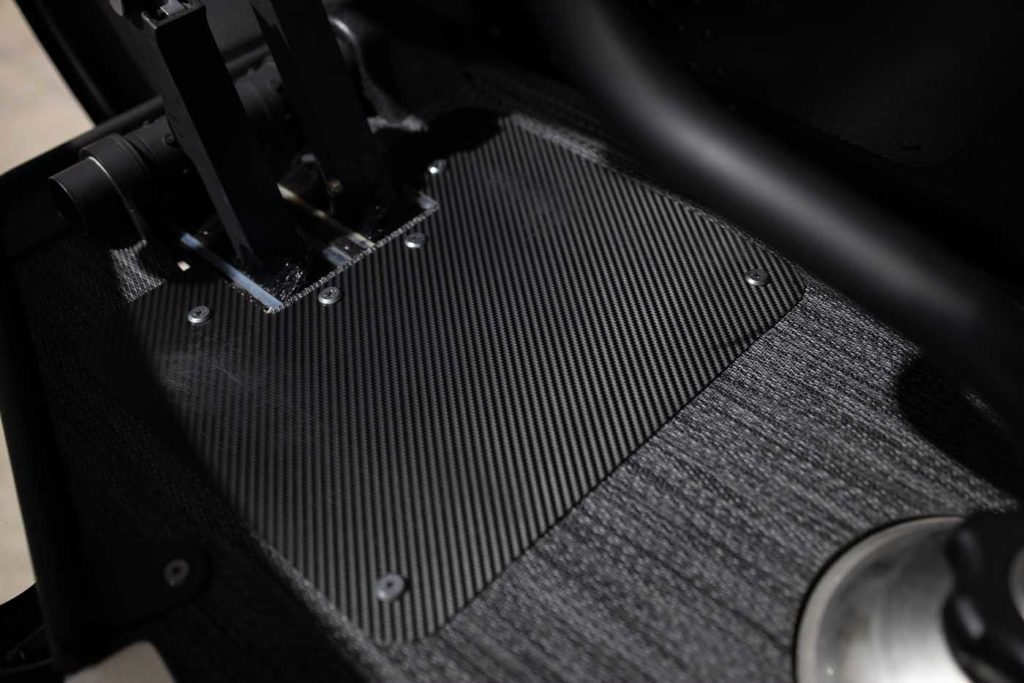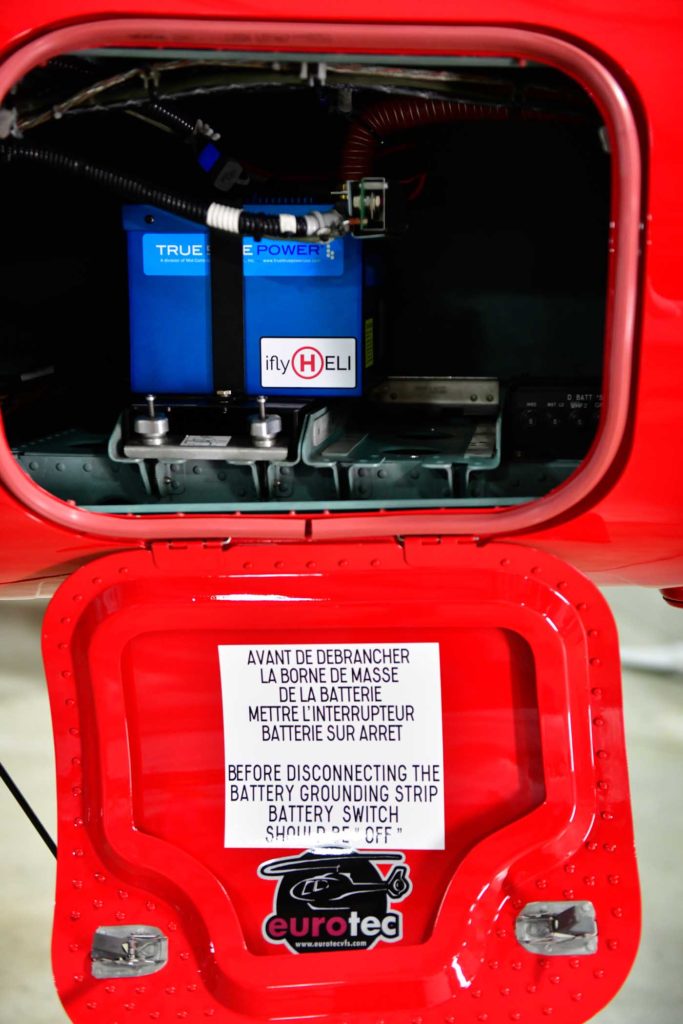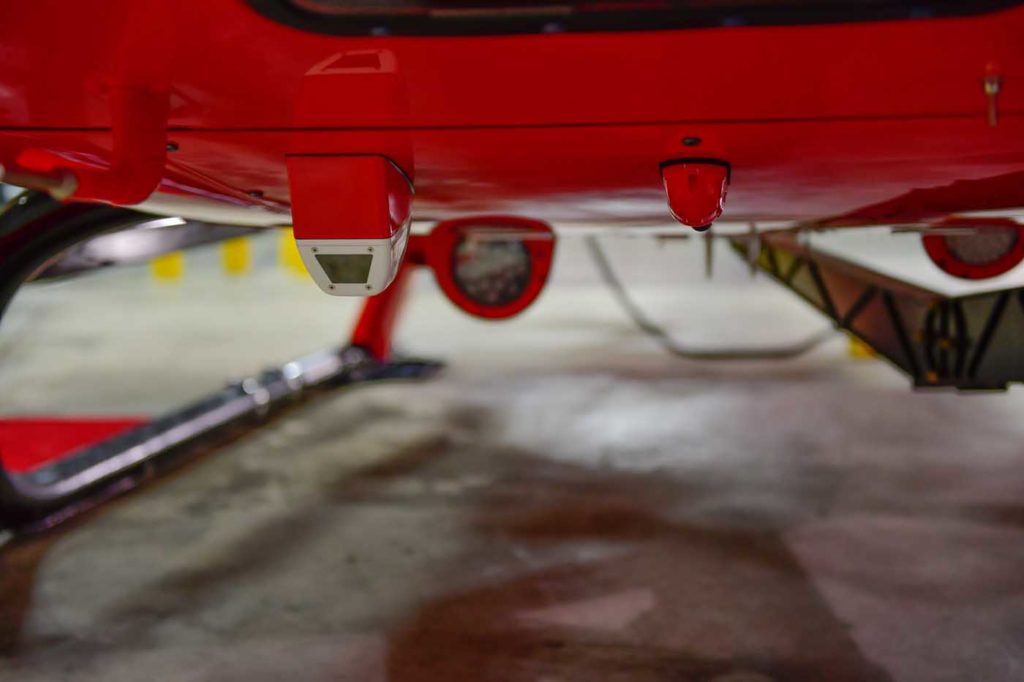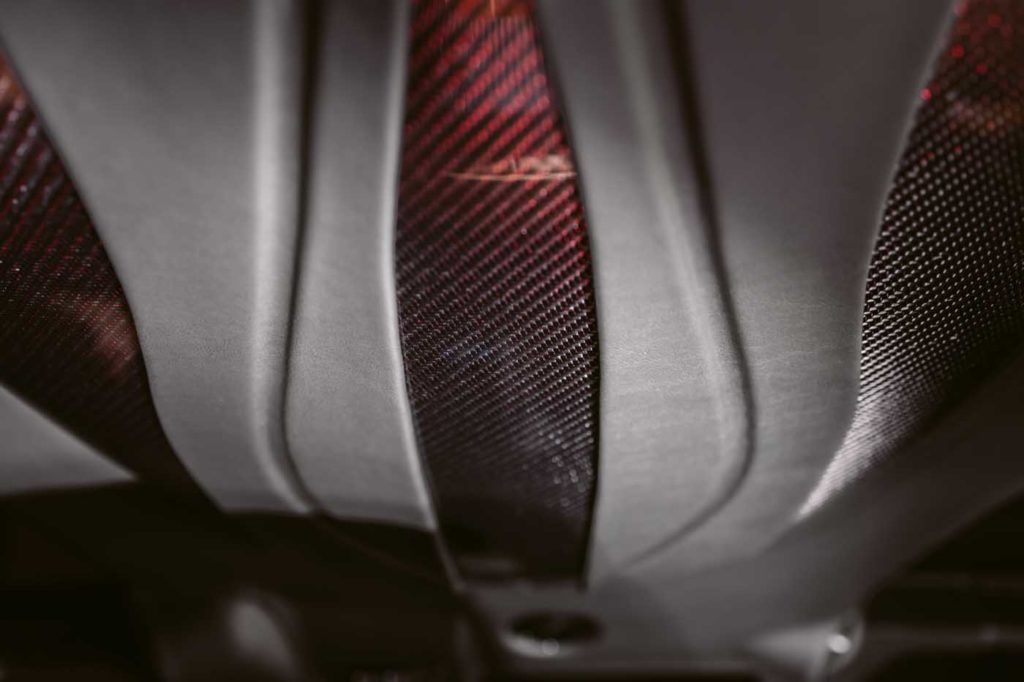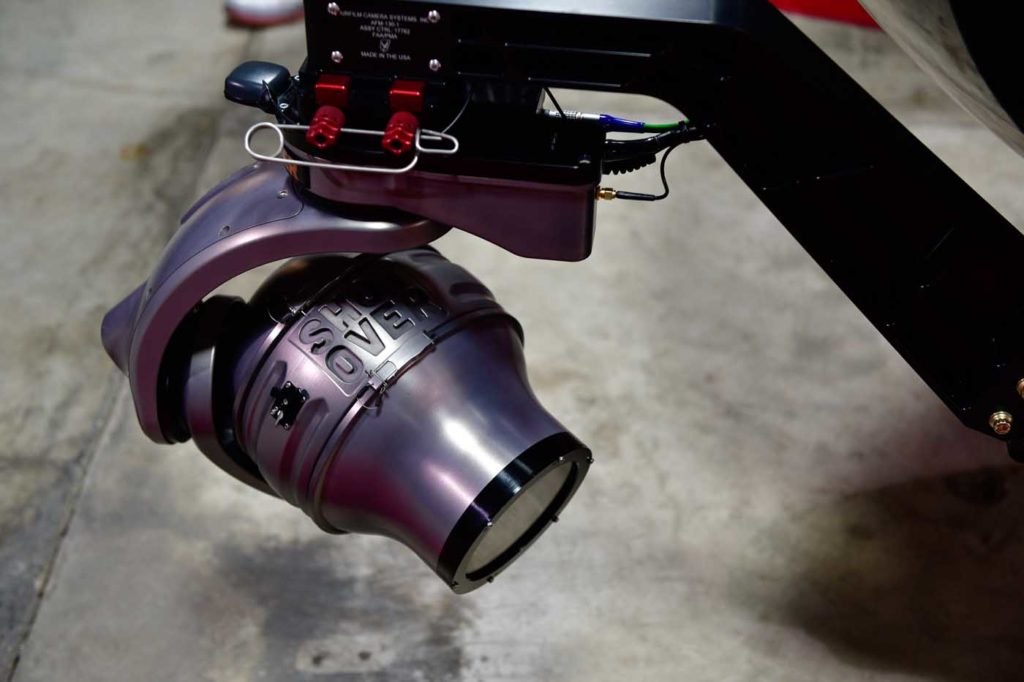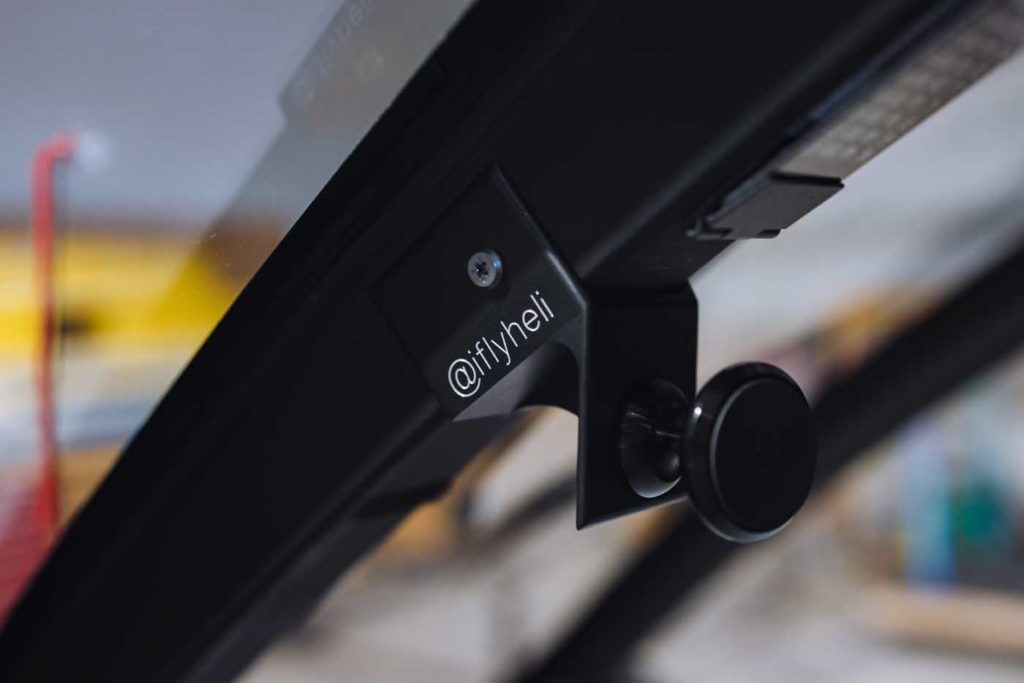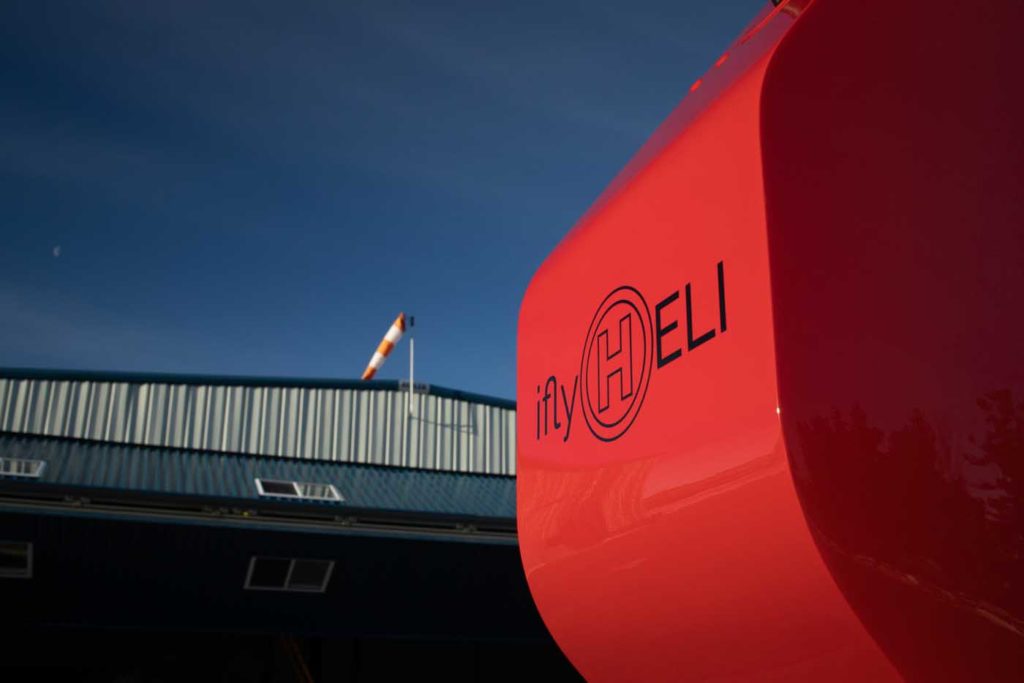Photos by Mike Reyno
As York Galland lifted off from EuroTec’s Millgrove, Ontario, facility on a freezing February morning, he was doing so in one of the most heavily-customized and high-tech Airbus H130s ever flown.
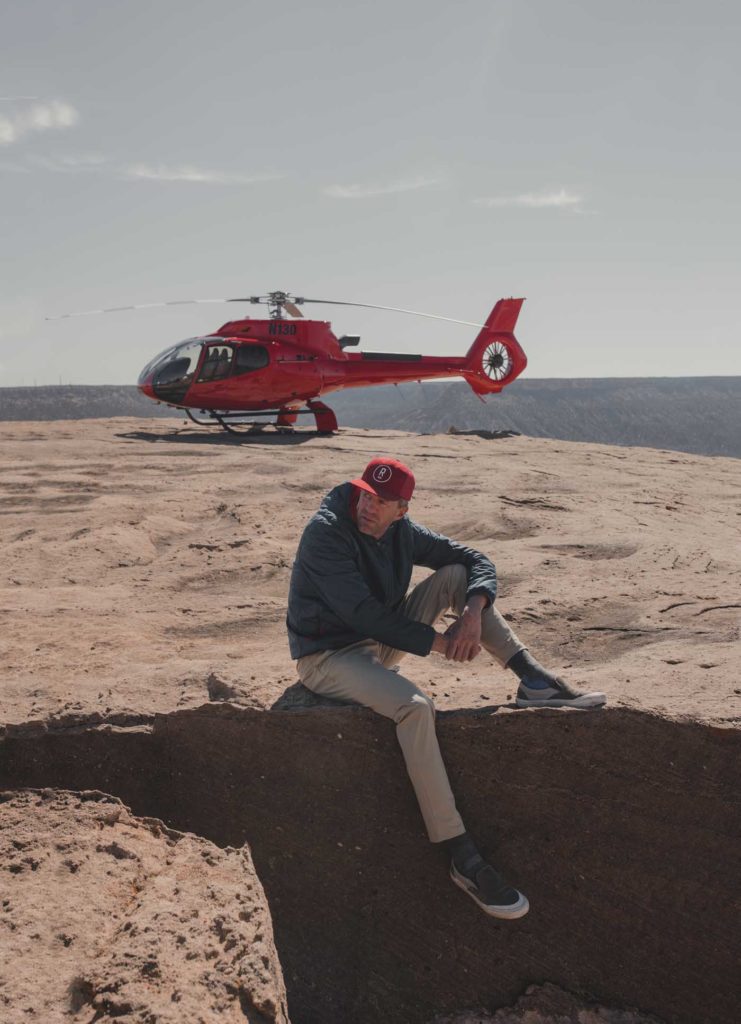
The aircraft — registration N130 — had just completed an extensive four-month completion process, with no part left untouched and/or upgraded. These included advanced avionics in the form of a Garmin G500H TXi, GTN 750Xi, and GTN 650Xi; a True Blue TB17 lithium-ion battery; a HeliSAS stability augmentation system and autopilot; external cameras mounted on the belly of the aircraft and on the tail; internal cameras to record flights from passengers’ points of view; a Meeker utility mount carrying a Shotover B1 gimbal system; a Max-Viz enhanced vision system (EVS); and high-end finishes throughout.
Galland is better known to aviation enthusiasts around the world by his Instagram handle @iflyheli, through which he shares photos and videos of his amazing journeys over some of the most spectacular and photogenic landscapes in North America. And it’s fair to say he’s been pretty successful with it — since launching his Instagram page in 2014, Galland has gained over 104,000 followers, making him one of the more recognizable figures in the rotary-wing industry, while his social media presence has led to collaborations with Red Bell and GoPro, and countless others.
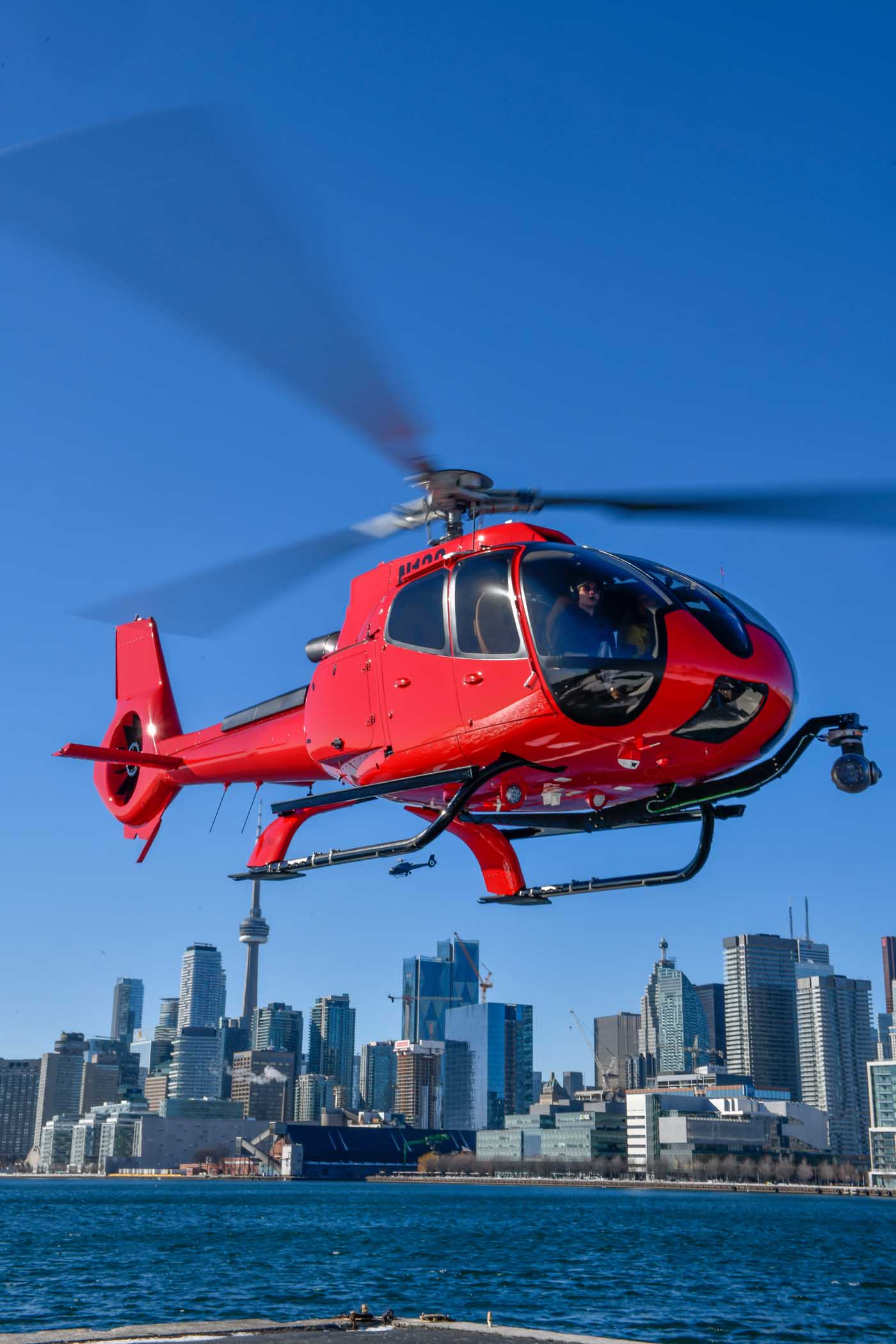
“iflyheli today is a lifestyle platform showing that helicopters aren’t just used for long lining, or putting out fires, or tourism work; they can be used for getting from point A to point B, and with an amazing visual experience along the way that you don’t get in an airplane,” Galland told Vertical.
“You’re having this incredible flight experience, seeing things that many people have not seen from that perspective. iflyheli has become this platform to share that with people; either people I’m working with, or we’re flying together for one reason or another, or they’re experiencing it vicariously through my social media. It’s become this platform to share the beauty of flight, and the beauties of this Earth.”
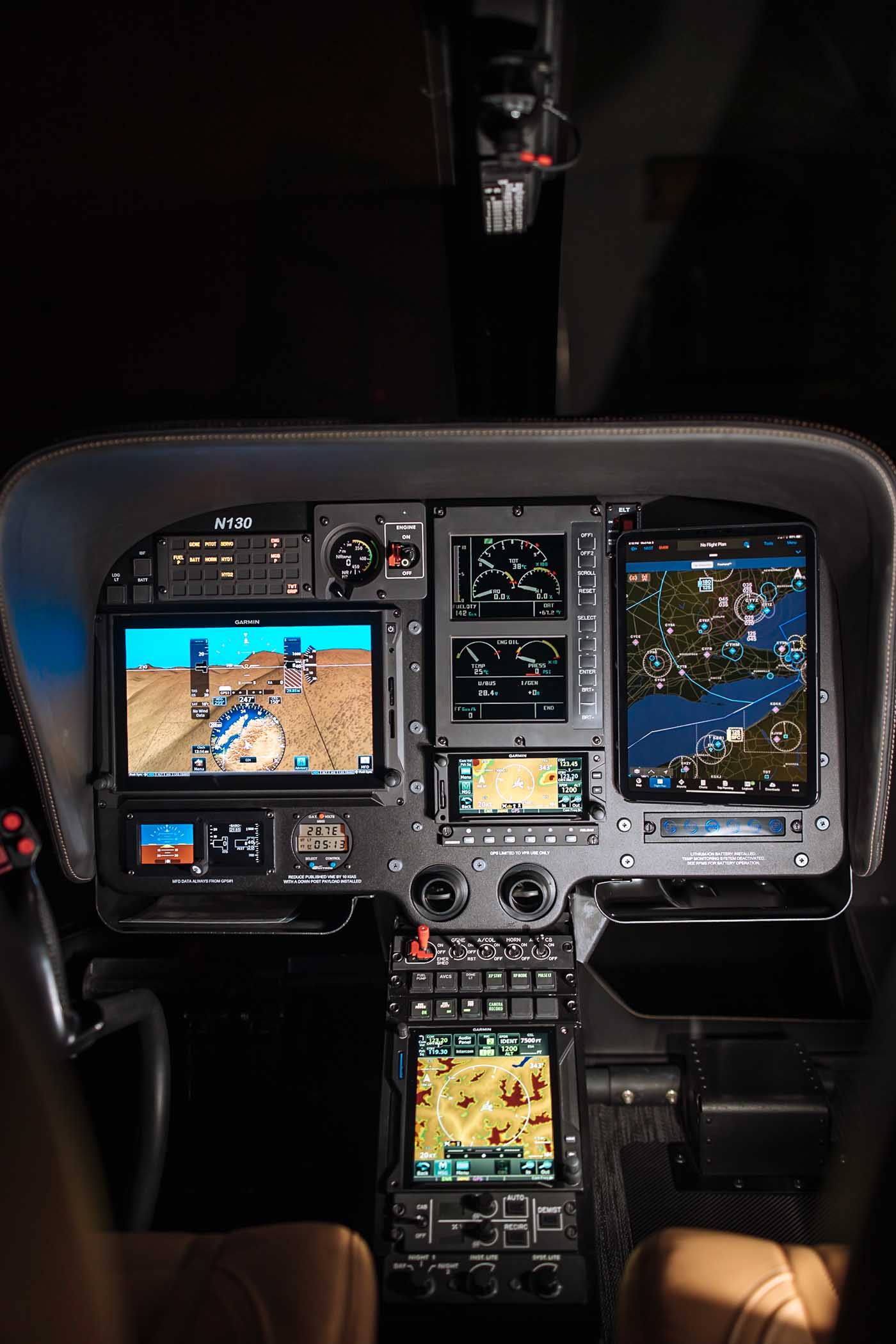
While Galland is best known as a rotary-wing pilot, he began his professional aviation life as a fixed-wing pilot. Having secured his fixed-wing license at 21, he spent several years working as a corporate pilot. He often saw helicopters at the airport, and eventually decided to book a trial flight. He was hooked from the first moment at the controls, and gained his rotary-wing license just a couple of months later.
However, helicopter flight remained nothing more than an occasional hobby, until his cousin — a filmographer — encouraged him to do something more with it.
“I just thought helicopters were something you either did tours or utility work with,” said Galland. “My cousin said, ‘Well, you’re passionate about film and photography. If you got a helicopter, we would use you for aerial filming. I’d keep you busy.’ ”
Galland’s wife was supportive of the idea, and in 2010 he took the plunge, purchasing a Robinson R44 along with some “entry-level video equipment.”
A few jobs followed through word-of-mouth, and with Galland’s focus on photography flights, his daughter suggested he set up an Instagram account to market the business.
“The final product far exceeded my expectations. Just in the little details, from the stitching on the interior to getting quality, titanium screws, and powder coating things that could be powder coated. With all those little details, it came out amazing.”
Not long after this, Galland ended up taking a photographer from New York on a flight in Los Angeles. It turned out the photographer had about a million followers on Instagram, and after the flight, he offered to send Galland a series of pics to post and tag.
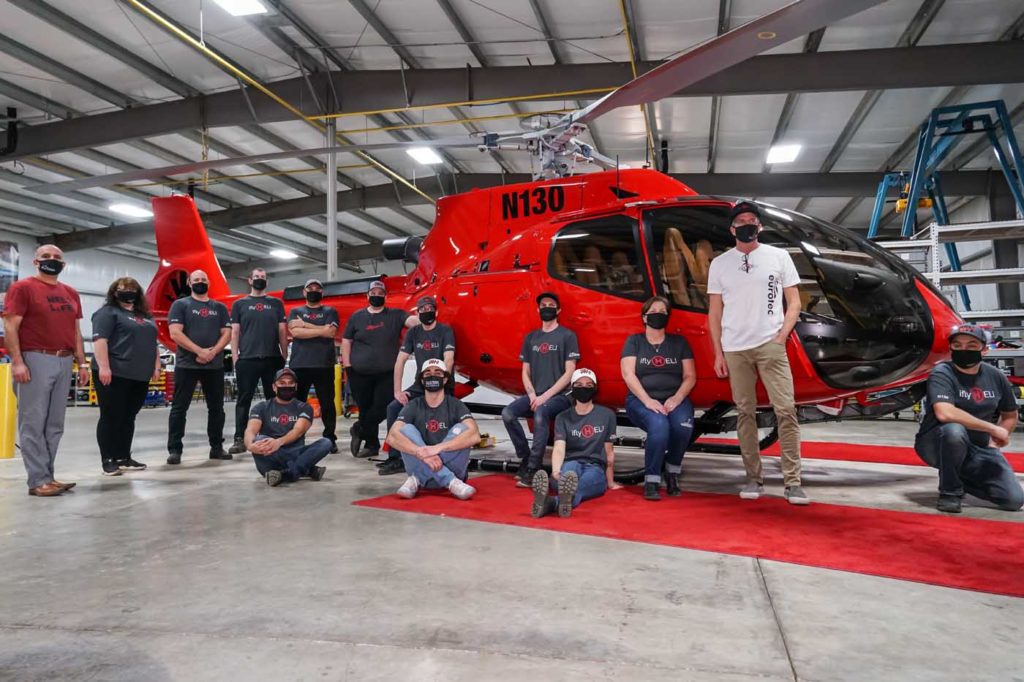
“Within a month I think I had 3,000 followers, most of which were photographers interested in aerial photography. So, I had more aerial photography work than I wanted to do!” he said.
According to Galland, @iflyheli then quickly evolved from being a photo and aerial film platform to being a “lifestyle” platform.
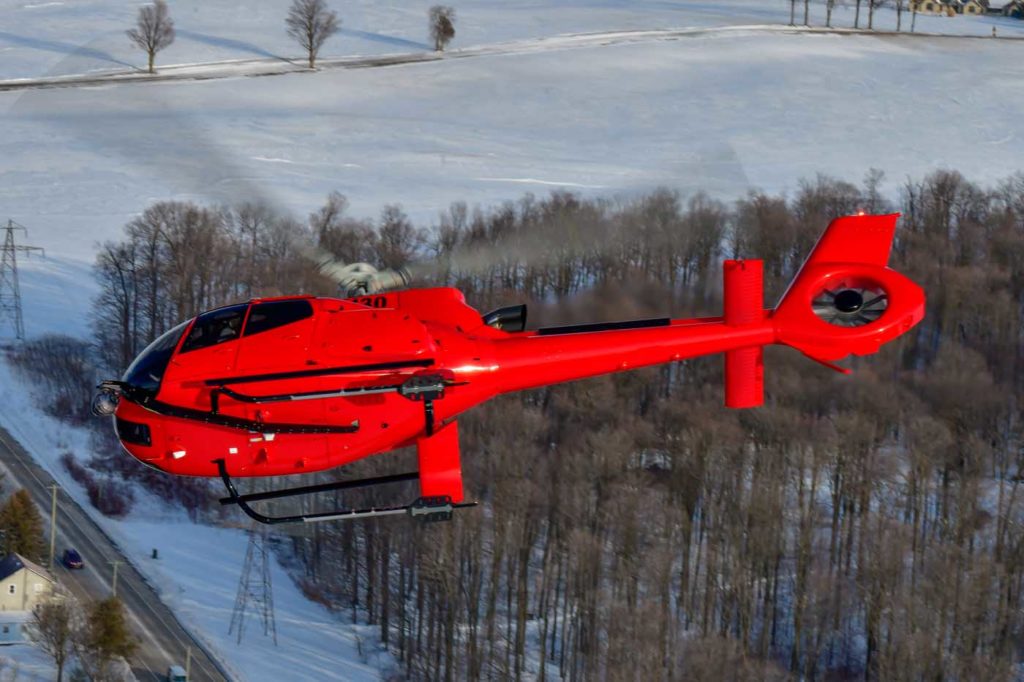
Now based in Colorado and Utah, Galland flies about 300 hours a year, and these flights can take him anywhere in North America. “Any time I can go cross-country, I welcome it,” he said.
For Galland, the beauty and appeal of rotary-wing flight is in the unique access and perspectives it provides. “There are some places we’ve landed where I’m thinking, ‘I don’t think anybody has been here before.’ It can feel like you’re on a different planet when you’re somewhere unexplored or untouched. You feel like you’re in a new in a new world.”
Making the transition
After beginning his rotary-wing business with a Robinson R44, Galland transitioned to a much-loved R66, in which he flew 1,200 hours in three years. He then became an “early adopter” of the Bell 505 Jet Ranger X, for which he still holds much affection. He praised both the R66 and 505 for the visibility they provided for pilot and passengers, but the H130 was always his ultimate target as a platform.
“It’s a bigger aircraft, it’s more to handle, and I think it’s something where you’re better off having some time and experience,” he said. “I have about 3,000 hours in rotorcraft right now, and the way that I kind of worked my way up to a 5,500-pound [2,495-kilogram] aircraft was just to take these intermediate steps with complexity and with power.”
The H130, said Galland, continues the tradition of providing exceptional visibility, adds plenty of power, has space for seven comfortable seats, and is able to carry all the tech he wanted.
“It’s a perfect machine for me,” he said. “It’s not a working machine, it’s a flying machine for me.”
The particular aircraft he chose was a used one, but only lightly. Just six years old, it only had a few hours on the airframe. He chose EuroTec for the completion having seen the company’s previous work at tradeshows over the years.
“I had enough confidence in Hoss [Golanbari, VP and managing director at EuroTec] and his team, that I knew by the time they were done with it, it would be better than new — they would go through every single thing in the aircraft and if it wasn’t perfect, they’d make it perfect.”
The seven seats feature fine leather coverings, with the “iflyHeli” logo repeated in a variety of locations around the inside and outside of the aircraft.
For the ultimate in clear visibility from the cockpit, all the windows were polished and ceramic coated, inside and out, by Amaris Premium Aviation. Not only did this process clear the windows of any marks made over the previous six years, but it also eliminated the “micro-swirls” that appear in aircraft even direct from the factory. These are most often apparent when flying into the sun.
Amaris also provided the reflective ceramic shine protecting the H130’s new vibrant red livery. This is offset by another custom touch — a matte black exhaust.
A high-tech completion
The technology contained within the aircraft isn’t just there to provide more toys to play with — almost every piece enhances safety.
“I fly at night, I fly cross-country, I fly to new airports, I fly to areas I’ve never been before, and there are certain risks that you’re assuming when you do these things,” explained Galland. “You’re in unfamiliar situations, or if you’re doing a lot of cross-country, you’re going to come in and out of weather, so there might be some lower visibility scenarios. And I think the technology that I have in this H130 really creates a layer of safety that is important for my mission.”
The technology — including the Garmin avionics suite — allows for enhanced weather and flight planning, and provides for increased situational awareness in-flight.
The external cameras provide views of the skids and tail, taking any guesswork out of the surrounding environment during landing or taking off, while the Max-Viz EVS helps in low visibility conditions.
“I think the technology that I have in this H130 really creates a layer of safety that is important for my mission.”
While Galland had a list of items he wanted to include as part of the completion, EuroTec also provided input that shaped the final product. An example of the later was the Max-Viz EVS, which Golanbari suggested would be a useful aid given Galland’s flights to unfamiliar and confined areas. Getting it into the aircraft required a new supplemental type certificate (STC).
Another new STC was required for the installation of the True Blue Power TB17 lithium ion battery, which provides an enhanced lifespan (eight-plus years), increased available power, quicker starts and reduced maintenance costs — all in a lighter package.

EuroTec also created a video display and a mixer that allows Galland to switch between different cameras, internal and external, and record everything his passengers see during a flight.
“I have never been so proud of the entire EuroTec team, with the way they worked on this project during this unprecedented time while providing the level of attention to detail for which we are known throughout the industry,” said EuroTec’s Golanbari. “The personal trust York displayed in us to give us a ‘carte blanche’ to truly amaze and surprise him was greatly appreciated and will never be forgotten. It was an amazingly fun build for the entire EuroTec team, and we managed to provide him with what we think is the coolest and most advanced H130 anywhere in the world.”

Throughout the completion process, Galland received weekly emails, with photos and video updates.
“The final product far exceeded my expectations,” he said. “Just in the little details, from the stitching on the interior to getting quality, titanium screws, and powder coating things that could be powder coated. With all those little details, it came out amazing.”
The aircraft has even been fine tuned for Galland’s mission, balanced to fly at the speed he typically flies at. “Hoss [Golanbari]’s promise was when this aircraft will be delivered, it’ll look, smell and fly better than new — as though it came from the factory. And it’s even better than that.”
Now back in Colorado with Galland — following a special photo shoot with Vertical over Niagara Falls and downtown Toronto — the H130 has quickly become a social media star in its own right. Fans of Galland, and the H130, will be able to follow their adventures exploring some of the more untouched parts of North America on Instagram, where iflyheli will continue to showcase the unique perspective that rotary-wing flight can provide.
“I still have my cautions and my worries about social media and its potential to be destructive,” said Galland. “But I’ve also learned that it’s got a lot of potential to spread a lot of good vibes and beautiful things.

“One criticism I had [before joining Instagram] is that you don’t have any ‘real’ friends on social media; they’re just digital friends,” he continued. “But the coolest product of flying has been the people I’ve met, and the helicopter and social media were both key ingredients. I would say most of my best friends right now are people that I actually know — in real life we’ve met, we’ve flown together — and it was a result of social media.”






